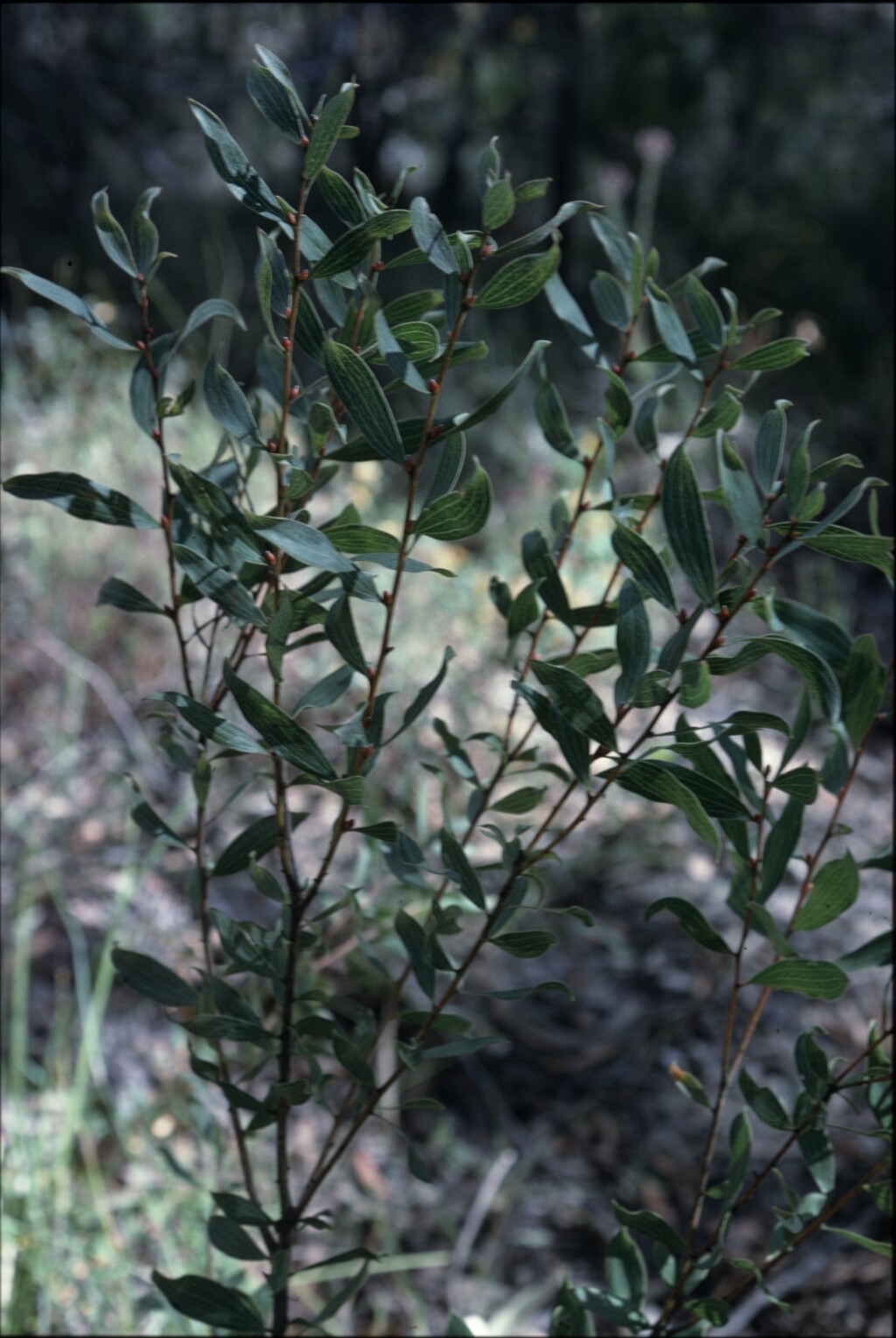Hakea dactyloides
(Gaertn.) Cav. Finger HakeaErect single-stemmed bushy shrub or small tree, 2.4-4.5 m high, non-sprouting; branchlets glabrescent or sparsely appressed-pubescent at flowering. Leaves narrowly elliptic to almost linear, rarely narrowly obovate, sometimes falcate, 4–13 cm long, 8–30 mm wide, apex acute to acuminate; longitudinal veins 3, usually more prominent on lower surface. Inflorescence 20–30-flowered; pedicel appressed-pubescent; perianth white, glabrous; pistil 4.0–4.5 mm long; pollen presenter conical. Fruit obliquely elliptic, slightly curved, 2.5–3.5 cm long, 1.7–2.3 cm wide, not beaked; horns lacking; seed not occupying whole valve face, obliquely obovate, 18–23 mm long; wing extending only down one side of body. Flowers Sep.–Dec.
GipP, EGL, EGU, HSF. Also NSW. Confined in Victoria to the far east, and there rather rare, occurring on rocky ridges and peaks (e.g. Mt Kaye, Mallacoota area, Howe Range).
Hakea dactyloides under its present circumscription is a complex involving at least 2 species, extending from far south-eastern Victoria to south-eastern Queensland.
Barker, R.M.; Barker, W.R.; Haegi, L. (1996). Hakea. In: Walsh, N.G.; Entwisle, T.J., Flora of Victoria Vol. 3, Dicotyledons Winteraceae to Myrtaceae, pp. 870–882. Inkata Press, Melbourne.
 Spinning
Spinning


